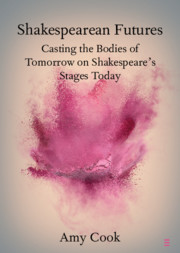Element contents
Shakespearean Futures
Published online by Cambridge University Press: 21 October 2020
Summary
- Type
- Element
- Information
- Online ISBN: 9781108782951Publisher: Cambridge University PressPrint publication: 19 November 2020
References
- 17
- Cited by

